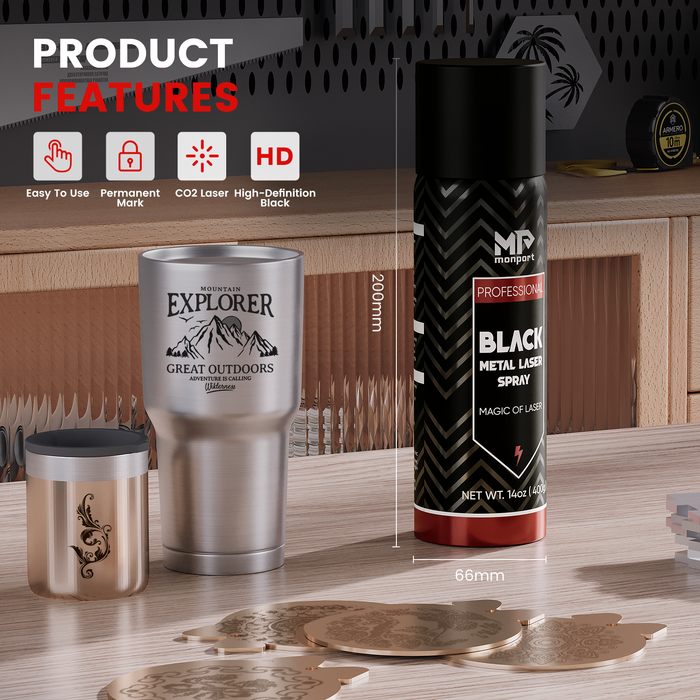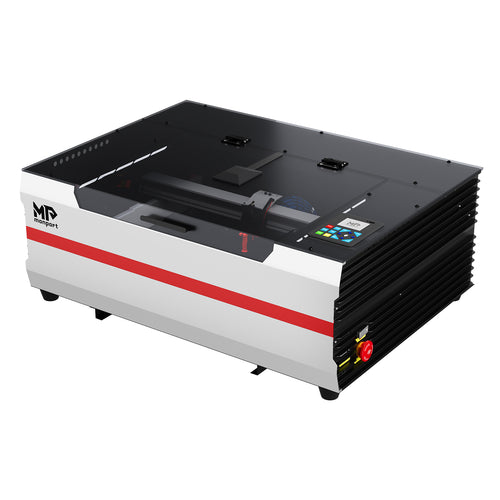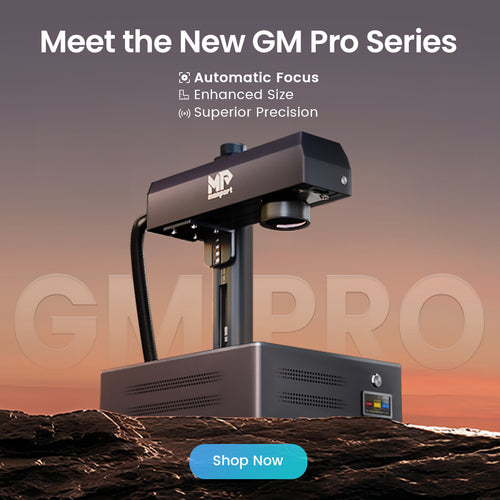Introduction
As laser cutting, engraving, and marking systems become more common in business and education, reliable manufacturers are bound to take laser cutting precautions to ensure the laser engraver safety of laser machines. However, since laser engraver safety standards vary around the world, it is wise to look carefully to ensure that the laser cutter is indeed safe for your intended use and environment. If you purchase a system without assessing its security, it could result in property damage or serious user injury.
As the laser system owner, you are responsible for meeting all workplace safety requirements for your operation. Not complying with local and federal regulations or ignoring safety obligations not only puts employees at risk, but also increases liability in the event of an accident. Even if you unknowingly bring an unsafe laser system into your facility, you may be found guilty of negligence. We always recommend that you do your own research, but first, here are seven questions to help you assess the safety of a laser machine before you buy one, including whether it is equipped for safe use with materials like black laser marking spray.

Is the laser system properly labeled?
A quick indication that the system is not in compliance with basic safety regulations is if the system does not display the required safety labels. U.S. and international regulations require all laser manufacturers to place warning labels at specific locations on the system to indicate specific hazards. If the system is not properly labeled, it does not meet minimum safety requirements and should not be used. Good machinery and equipment will take corresponding safety measures and set warning signs in the parts that are easy to cause damage. The emergency stop button should be set on the control cabinet or the position that is easy to operate. This and similar buttons not only remind users of their safety, but also make them easy to use. Monport models are equipped with panic buttons and warning labels placed on the outside of the body.
Does the design include a metal casing?
The design of an excellent laser system should include a strong metal housing to protect the user from exposure and injury. The surface of the engraving machine should be smooth and clean, and the color of the paint layer should be uniform and consistent, without defects such as bubbles, accumulation, and scratches. The protective layer should be complete and uniform without drawbacks such as fading, blotching, peeling, and rusting, and according to industry standards, the laser engraver safety enclosure is made of metal thick enough to prevent the laser beam from penetrating. Systems made of plastic should be avoided as they are not effective in preventing the beam from burning through the shell and causing significant injury. In addition to the housing material, ensure that all housing doors or access panels have a tight enclosed design, which is necessary to prevent any laser energy from escaping. Long exposure to the laser is a risk, and when carving some other chemical materials that can produce toxic gases, a good sealing environment is the protection of the sculptor. No good system without these can truly be considered laser engraver safety compliant. Therefore, be sure to check all enclosure openings when you receive the machine and follow proper laser cutting precautions at all times.
Is there a redundant interlock on the operating door and access panel?
According to all major international standards, a qualified laser system requires additional interlocking devices on the doors and access panels used in all operations. These interlocking devices prevent the laser from firing when the door is open. This basic design feature helps ensure safe operation and avoid exposure to laser radiation.
Is the viewing window made of safety glass?
Although plastic observation windows meet the minimum requirements for laser engraver safety, they are not as safe as laminated glass. If the stray laser beam comes into direct contact with the plastic window, it will quickly burn through and escape the shell. For CO2 lasers, laminated safety glass with an optical density of 6+ is recommended. The glass should have at least two layers with a thin film in between to keep the glass intact even if hit directly by a laser beam or heavy object. Toughened glass is unsafe because it can shatter into small pieces and allow the laser energy to escape. Systems with fiber laser sources should have an additional protective layer, usually blue or green, to contain fiber laser radiation, which is especially harmful to the eye if viewed directly. If you're not sure what to look for, you can ask the manufacturer for window safety certification for all laser sources included in the system. Monport's Fireproof machines are equipped with PC glass, which not only effectively protects against laser damage but is also stronger and more fire-resistant than ordinary acrylic glass, ensuring compliance with essential laser cutting precautions.
Is there a high temperature alarm?
Because the materials can be flammable, another important laser engraver safety feature in laser systems is a high-temperature sensor and alarm. If unusually high temperatures are detected in the laser processing area, the system is designed to turn off the laser source and trigger an audible alarm. Be sure to double-check with the manufacturer, as this feature is not mandatory. For added safety, some laser systems can be configured with optional fire suppression. While these safety features are helpful, it is important not to leave the laser system unattended during use and to monitor its safe operation, following essential laser cutting precautions.
Is the laser source air-cooled by low-voltage power supply?
Despite laser engraver safety concerns, there are many low-cost systems that use glass laser tubes, which are powered by HVDC and cooled with water. Basically, cold water is circulated around a glass laser to prevent it from overheating. There is a serious risk of electric shock in the event of water leakage, damage to the glass laser tube, or direct contact with any high-pressure element. Electric shocks can be fatal when the voltage exceeds 25,000V and the current ranges from 30 to 150mA. In any environment, but especially in schools, careful consideration should be given before purchasing a laser system built using high-pressure glass lasers. A safe choice is an air-cooled laser system with a low-voltage power supply. The Monport power supply controls the start and stop of the laser, and it is equipped with a guard switch for testing various issues such as external ventilation. In addition, Monport laser power is rigorously tested to deliver the highest quality and efficiency on the market. Of course, in the process of use, the sculptor should pay more attention to the laser and high-pressure part of the machine, and laser cutting precautions should be strictly followed. Non-professional personnel are strictly prohibited from disassembling the machine without authorization.
How to choose a reliable and secure laser engraving machine? The safety of laser systems needs to be ensured before purchasing them, as not all manufacturers follow the same safety standards. If you work in an environment and strength to choose the right machine for you, but there is an important problem, a very safe machine also needs the correct operation process, so it is very important to learn the correct use of engraving machine for your personal safety.
Safety specifications for using laser engraver:
1. In the process of working the machine, the operator is forbidden to leave without authorization to avoid unnecessary losses.
2. When the machine is working, the top cover plate of the machine must be covered to prevent the laser from deviating and wounding people.
3. Non-professional personnel are strictly prohibited to disassemble the machine due to lasers for sale and high pressure parts in the machine.
4. As this kind of lasers for sale is invisible light, inflammable and explosive items are strictly prohibited to be placed near the equipment to prevent fire from laser deflection.
5. It is strictly prohibited to place any irrelevant fully reflective or diffuse reflective objects in the device to prevent the lasers for sale from directly reflecting on the human body or flammable objects.
6. In the process of working the machine, the operator must observe the working condition of the machine at any time (such as: hook edge deformation, whether the paper is blown up by the air pump to block the lasers for sale, abnormal sound of the machine, the temperature of the circulating water, etc.).
7. Do not push or pull the trolley or beam by hand.
8. The machine is located in the environment without pollution, no strong electricity, strong magnetic interference and influence.
9. When the voltage is unstable, it is forbidden to start the machine, otherwise the voltage regulator must be used. It is forbidden to be used by untrained personnel.
10. The continuous working time of the machine shall not exceed 5 hours (more than half an hour rest is required during the work).
11. It is strictly prohibited to turn on the ammeter in the state of large value, so as not to breakdown the lasers for sale power supply and shorten the life of the laser tube.
12. the basic limit of the use of lasers for sale power (that is, the ammeter can not exceed 20mA)
13. In case of machine failure or fire, please cut off the power immediately.








